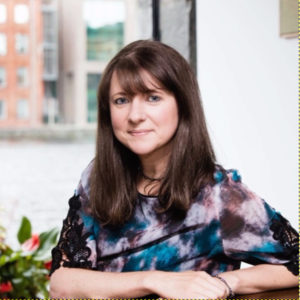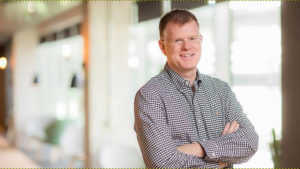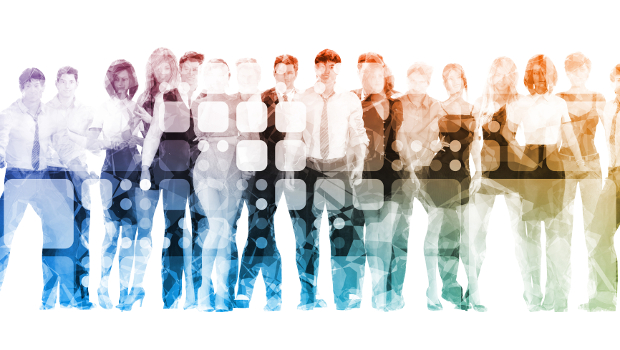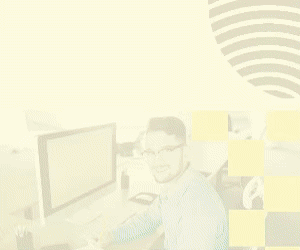What is the age range of employees in your company? Twenty years? Thirty years? With retirement ages moving ever upwards, in theory, it is possible that Irish companies could see a situation where there are 50 or even 60 years between their oldest and the youngest members of staff.
With such dramatically different life experiences, can such a spread of people be expected to merge into seamless working teams, collaborating and pooling innovative thinking, creativity and experience?

As we plan for our move to the new campus we are looking forward to providing employees with 21st century tools for everyone to not only learn in new ways, but to challenge themselves and their teams to see what they can do better next time. This is what we call a growth mindset, Joanne Morrissey, Microsoft
Today’s workforce has diverse skills, working preferences and requirements, but a common theme across them all is the need for flexibility. According to a WorldAtWork survey, 65% of organisations found that workplace flexibility had a positive impact on employee engagement, productivity and satisfaction.
With the likelihood of an increase in the number of older and non-salaried workers over the coming years, organisations will look increasingly to IT to provide the flexibility in tools and platforms to cope.
Capitalising on diversity
“As HR director, I regularly ask myself how we can capitalise on the eclectic mix of perspectives and life experiences that our employees bring from the more than 60 countries represented throughout our employee base,” said Joanne Morrissey, human resources director at Microsoft Ireland. “The answer is to create an environment which is collaborative and enables employees to do their best work.”
To this end, Microsoft runs mentoring circles and offers coaching faculties which provide the tools for employees to come together across the age profiles and experience spectrum, to share their insights and learn from each other.
“We aim to host sessions like this with employees on a regular basis, to check in with them and find out what we could do better, so we are all continuously learning from each other and our experiences, and share the feedback,” said Morrissey. “The feedback from these sessions has been hugely positive. Employees really value the opportunity to share their experiences with others, and to feel that their voice is being heard.”
According to Morrissey, collaboration in the workplace is the key ingredient to driving innovation for Microsoft’s customers and ensuring its employees are ‘true to themselves and their passions’. For instance, it recently held a ‘hackathon’ in which employees from across the organisation came together to work on a creative idea or a business problem.
“The hackathon had more than 18,300 participants and more than 4,750 projects created across more than 75 countries and 400 cities which Microsoft operates in,” she said. “Many Dublin-based employees worked on international projects collaborating with colleagues in Seattle, India and various locations across Europe. Not only do collaboration tools make initiatives like this happen in an effortless way, they can play a significant role in the innovation process.”
Campus help
Facilitating collaboration is also an important part of why Microsoft is currently building out a new campus in Leopardstown in Dublin.
“As we plan for our move to the new campus we are looking forward to providing employees with 21st century tools for everyone to not only learn in new ways, but to challenge themselves and their teams to see what they can do better next time. This is what we call a growth mindset,” said Morrissey.
“Moving to a new campus also generates excitement, energy and momentum in our teams of employees who now strive more than ever to deliver for our customers. Above all we see collaboration as the key enabler of a truly diverse workforce that celebrates the different skills, experiences and backgrounds that our employees bring.”

The older generation are the people who will have built the technology as it has been progressing. The chances are that somebody in their fifties was among the first users of social media 20 years ago or that they were amongst the early adopters of the Net, Safann MacCarthy, IrishJobs.ie
Microsoft believes that if people are relaxed coming to work and able to be their ‘authentic selves’, they feel empowered to do work that reflects their passion and to contribute to team goals that they are committed to.
“It’s a point of pride that we have been recognised by the Workplace Equality Index Awards as one of the Top 5 Best Places to Work for LGBT inclusion,” she said.
This has both social and business value, because when employees are surrounded by colleagues whose social demographics mirror those of the society in which it is operating, it’s better able to serve the customers in that society.
Customer diversity
“It’s not enough to only contemplate one type of customer—we must think broadly to encompass different backgrounds, abilities and preferences, and ultimately have a diverse workforce that reflects the customers we serve,” said Morrissey.
From a mechanical point of view, Microsoft has a variety of products designed to facilitate collaborative working, and it uses these internally as well as offering them to its customers.
“Sometimes this choice can be overwhelming, because there are multiple formats you can take advantage of. The trick is to select the right tool that makes it easy to do your best work and fits with the task or your personal preference,” said Morrissey. “Whether it’s writing a report, collaborating with colleagues using Office 365, or connecting from abroad using Skype for Business, our technology enables our teams to use the most flexible tools for collaboration.”
Meeting the needs of employees bridging three different generations isn’t a simple matter, but that doesn’t mean it isn’t possible.
“Our extensive pairing system not only allows older employees to share their professional experiences with new recruits, it enables those tech-savvy team members to help bring their colleagues up to speed on the latest developments,” said Morrissey. “We’ve also invested significantly in our training programmes to give individuals the skill-sets that empowers a digital-first approach to work. However, it would be wrong to see the challenge as being focused solely on the older generation.”

Some media reports have pitted generations against each other, with gen Xers waiting impatiently for boomers to retire, and millennials eyeing the spots the promoted gen Xers’ would leave vacant. In its evidence to date IBM shows generational differences at work are much ado about very little, Dr Sara P Weiner, IBM
Generational achievements
This is an opinion shared by others in the industry, including those with a focus on recruitment. According to Safann MacCarthy, marketing director for Irishjobs.ie, it would be a serious mistake to presume that just because someone is older that they might not be able to keep up with millennials who have been brought up with instant messaging and cloud collaboration tools.
The reason? It is possible that it was the older generation created those tools in the first place.
“If you’ve got somebody who is in their fifties or sixties but has been working in a tech environment all the way along, it’s not like they are experiencing some radical change all of a sudden. It’s not like a line has been drawn in the sand and they’ve woken up in a new world,” she said.
“These are the people who will have built the technology as it has been progressing. The chances are that somebody in their fifties was among the first users of social media 20 years ago or that they were amongst the early adopters of the Net.”
If they have been able to keep up with what has happened over the last 20 years, there is no reason to think that is going to change all of a sudden. “We don’t all hit a certain age and suddenly lose the ability to take on new skills and keep up with new technology,” said MacCarthy.
Filling vacancies
It is common to hear technology-driven companies complain that they cannot fill vacancies, and it is for this reason that it is important for companies to make sure they are providing the most attractive working environments, with the most diversity and flexibility. Because with a limited pool of people in much demand, they can afford to be picky about where they go.
“They’re only going to go for companies where they see an opportunity to progress themselves and to learn more, so personal development is important. So too is a company that’s willing to adapt as they change,” said MacCarthy.

Once communication is easier and more enjoyable, employees are more engaged in their work and more engaged in collaborating with their peers, Johann Butting, Slack
“If you go in as a really top talented 25-year-old, then there is a good chance that in ten years’ time you’ll have gotten married, bought a house, maybe you’ll have kids or you might have an aging parent that needs looking after – these are all the things that happen to people.”
All of a sudden lifestyle becomes more important than just money. And if a company is so rigid that it can’t help its top talent work around lifestyle changes then that talent is going to go elsewhere.
Workforce study
Meanwhile, a 2015 study conducted by IBM’s Smarter Workforce Institute on generational differences at work concluded that the evidence for difference is underwhelming, and that when there are differences between generations at work, they tend to be small.
“Given this underwhelming evidence, why does our fascination with generations persist and seem to be increasing? One reason proposed is that our current economic environment is fertile ground for age-based mudslinging,” said Dr Sara P Weiner, executive consultant leader with IBM’s Smarter Workforce and one of the study’s authors, along with Dr Rena Rasch.
“Some media reports have pitted generations against each other, with gen Xers waiting impatiently for boomers to retire, and millennials eyeing the spots the promoted gen Xers’ would leave vacant. In its evidence to date IBM shows generational differences at work are much ado about very little.”
Generational distinctions may even amount to stereotyping, too broad to be accurate or useful, and potentially discriminatory.
“It is also very difficult to disentangle the effects of generation from age in studies done at one point in time, and given the research evidence it may not be worth the effort. We encourage those responsible for talent in organisations to focus on the research evidence, and not to be misled by media headlines,” Weiner said.
The IBM study advises companies to find the most meaningful groupings, ensure there is a focus on employees as individuals, and take actions accordingly. This in turn will drive improvements in employees’ workplace experiences, leading to better bottom-line business results.
Coming together tools
For many companies, internet messaging and collaboration have become one and the same, with unified communications offerings from many of the biggest vendors such as Cisco and Microsoft. One of the most popular is Slack, a cloud-based application designed to facilitate team-based collaboration. Originally developed for internal use by a gaming company, it has rapidly grown in popularity to become one of the main business-orientated communications tools.
“Slack is designed around the value of empathy, which is both core to our product and to our internal culture. We built Slack to help make communication and collaboration easier and more transparent,” said Johann Butting, head of EMEA sales for Slack.
“That transparency and ability to express more of your personality by removing the more rigid and formal constraints of email helps build bridges between cultural differences, whether in age or in nationality in teams. It creates a work environment where people can show their expertise and the value they bring, while things like emoji reactions help foster team-ship and cohesion. Who doesn’t like getting a “tada!” from colleagues?”
Collaboration tools like Slack are proving invaluable to companies catering to multiple generations of users with varying levels of sophistication and familiarity with internet technologies. In particular, it is important for collaboration tools to take their lead from the kinds of tools consumers are using, as these have proven value in terms of user friendliness.
“Any decent collaboration tool has to be mobile-friendly, and there’s continued and growing demand for enterprise applications to be as simple and intuitive to use as the consumer apps on smartphones. People expect a consistent user experience at work and at home, and real-time collaboration on any device. It’s what is needed to get work done today,” said Butting.
Efficiency and productivity
According to Slack, some of the most significant benefits of collaboration tools are their ability to improve efficiency and productivity.
“If they didn’t do this, businesses simply wouldn’t be adopting them. We aim to make work more simple and more fun—sending a message need not mean a formal greeting line and sign-off—and quick reactions could be done with GIFs and emojis. That might sound trivial but they are important to the eco-system because they make communication more personable,” said Butting.
“Once communication is easier and more enjoyable, employees are more engaged in their work and more engaged in collaborating with their peers.”
Slack integrates tools commonly used by people to do their job into a messaging platform where they are talking with colleagues, sharing ideas and solving problems.
“For most organisations that’s where the actual work happens, and if we can help reduce the friction and time spent switching between applications to get work done, then we can make small savings of time that over a month, a year for individuals or for over 30,000 people in a single day adds up to deliver significant gains,” said Butting.





Subscribers 0
Fans 0
Followers 0
Followers